Loupe Shootout
LOUPE SHOOTOUT
There have been a number of discussions on this forum and others asking for recommendations on the best loupe to use for coins. Almost universally the Zeiss 3/6/9x and the Eschenbach 5x come up as most recommended. For the last couple years, I've been using enlarging lenses as loupes, so I usually chime in with the recommendation of a Nikon 50mm or 75mm, depending on the magnification needed. This recommendation usually falls on deaf ears, as most folks have no idea what to make of it. So, I decided to make a comparison among a few low to mid power (3-6x, with one 9x) loupes plus some enlarging lenses that can be used as loupes to show why I recommend them.
LIST OF THE CONTENDERS
Zeiss Aplanatic-Achromatic Doublet
This is an expensive (~$125) loupe that seems universally loved by those who own them
Lomo 6x Doublet
This is an inexpensive (I paid $10) loupe with decent performance
Eschenbach 5x Achromat
Another expensive (~$75) loupe with a strong following
Nikon 50mm f/4 EL-Nikkor
An inexpensive (~$25 used) enlarging lens. The aperture of f/4 gives a fairly narrow field of view when used as a loupe
Nikon 50mm f/2.8 EL-Nikkor
Another inexpensive (~$35 used) enlarging lens. The large f/2.8 aperture gives a wide field of view similar to the loupes in this shootout
Nikon 75mm f/4
A low-price (~$50 used) enlarging lens. The f/4 aperture gives a workable field of view due to the longer focal length
PHOTO OF THE CONTENDERS
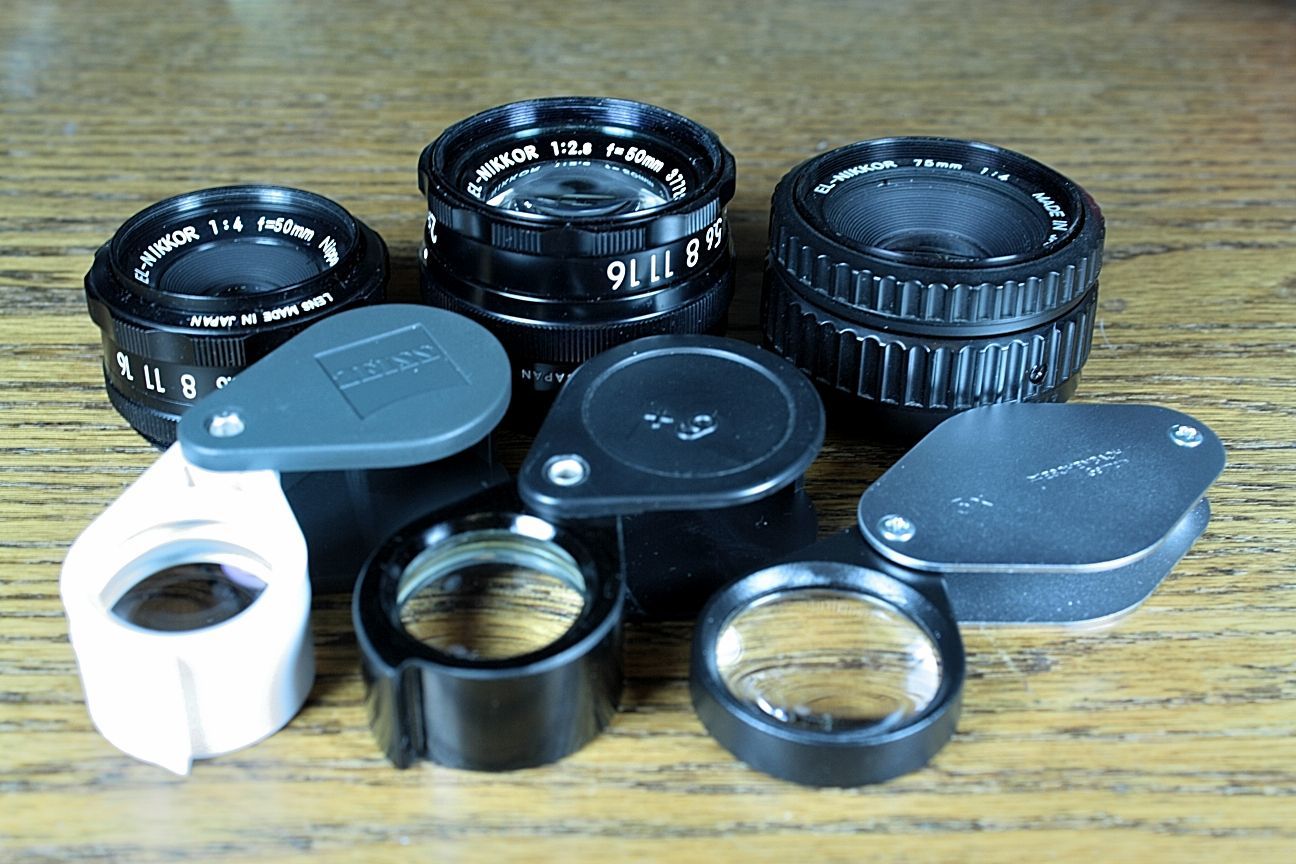
SOME NOTES ON MAGNIFICATION
The shorter the focal length of a lens, the higher its ability to magnify an image but also the shorter its working distance. The Magnification Power of a lens of focal length FL is:
M = 250mm/FL +1
This formula assumes the lens is held close to the eye, which is pretty typical of how loupes are used to view coins.
So a 50mm enlarging lens, used as a loupe, has magnification of 250/50 + 1 = 6x. It will magnify like a 6x loupe. Similarly, a 75mm enlarging lens will magnify by 4.3x.
Some magnifiers are specified in Diopters rather than Focal Length or "Power". The Diopter rating of a lens is:
D = 1000mm/FL
So a 50mm enlarging lens is rated at 1000/50 = 20 Diopters. Given the Diopter rating, the Magnification is:
M = D/4 + 1
DETAILS OF THE SHOOTOUT
For the shootout, I used a 1956-D RPM#4 Cent as the test vehicle, centering the images around the Date and Mintmark area. The images were taken with a Canon XS camera using a Canon 18-55mm lens in manual mode. The test lenses were held at their normal working distance from the coin, and the camera height above the coin adjusted such that the view would be similar to what the eye would see in this configuration. Working Distances were:
Nikon 50mm f/4: 37mm
Nikon 50mm f/2.8: 30mm
Nikon 75mm f/4: 50mm
Zeiss 3/6/9x: 70/35/20mm
Eschenbach 5x: 45mm
Lomo 6x: 35mm
IMAGES TAKEN WITH THE LOUPES
Images are of the overall view seen by the lens, plus crops of the mintmark area.
ESCHENBACH 5X
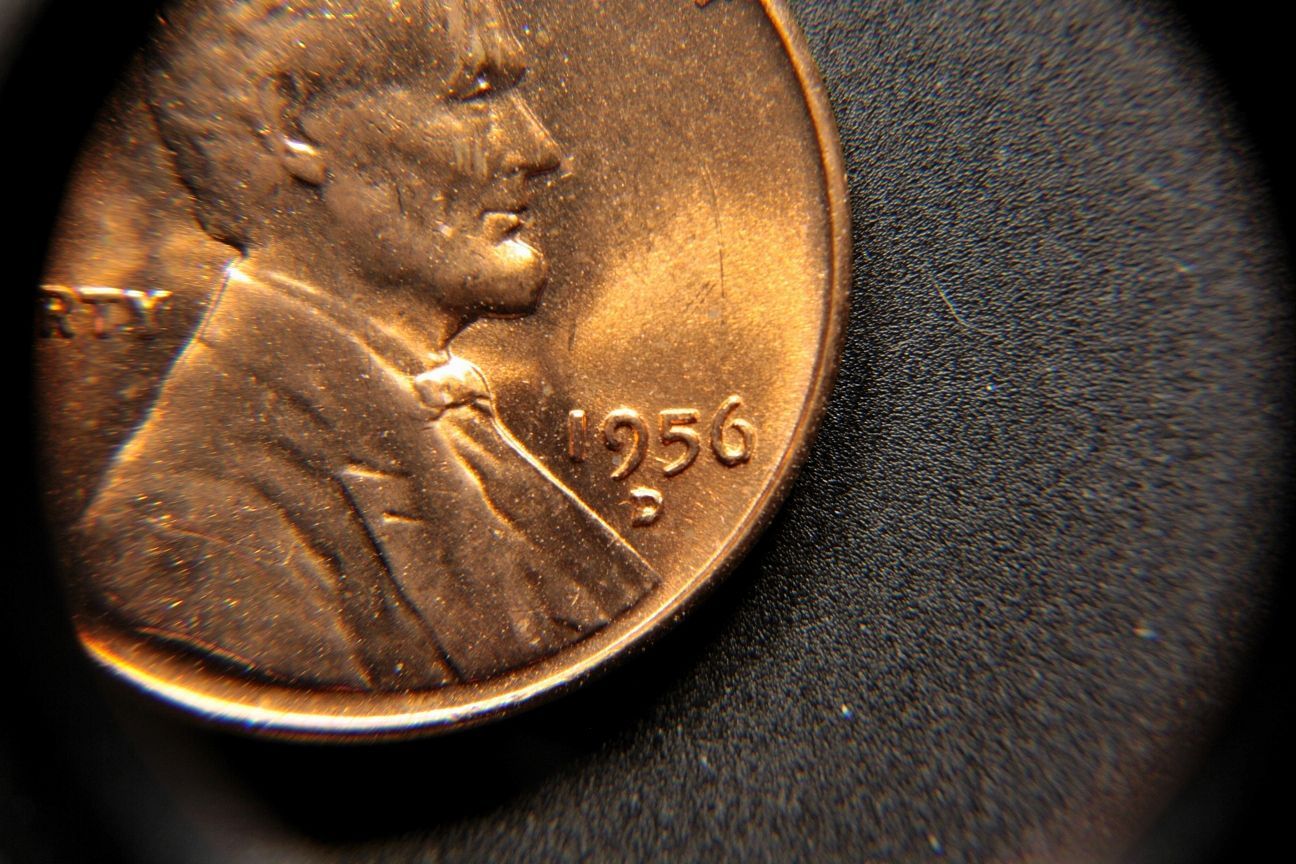
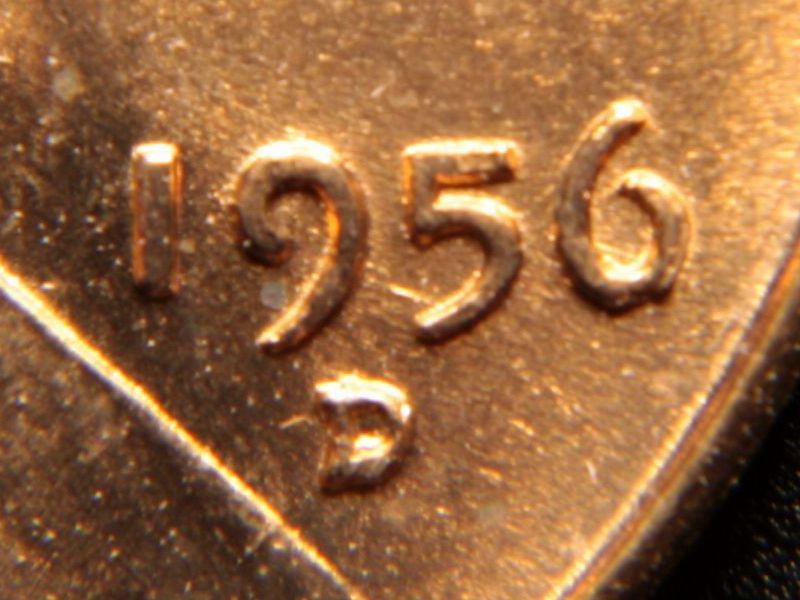
LOMO 6X
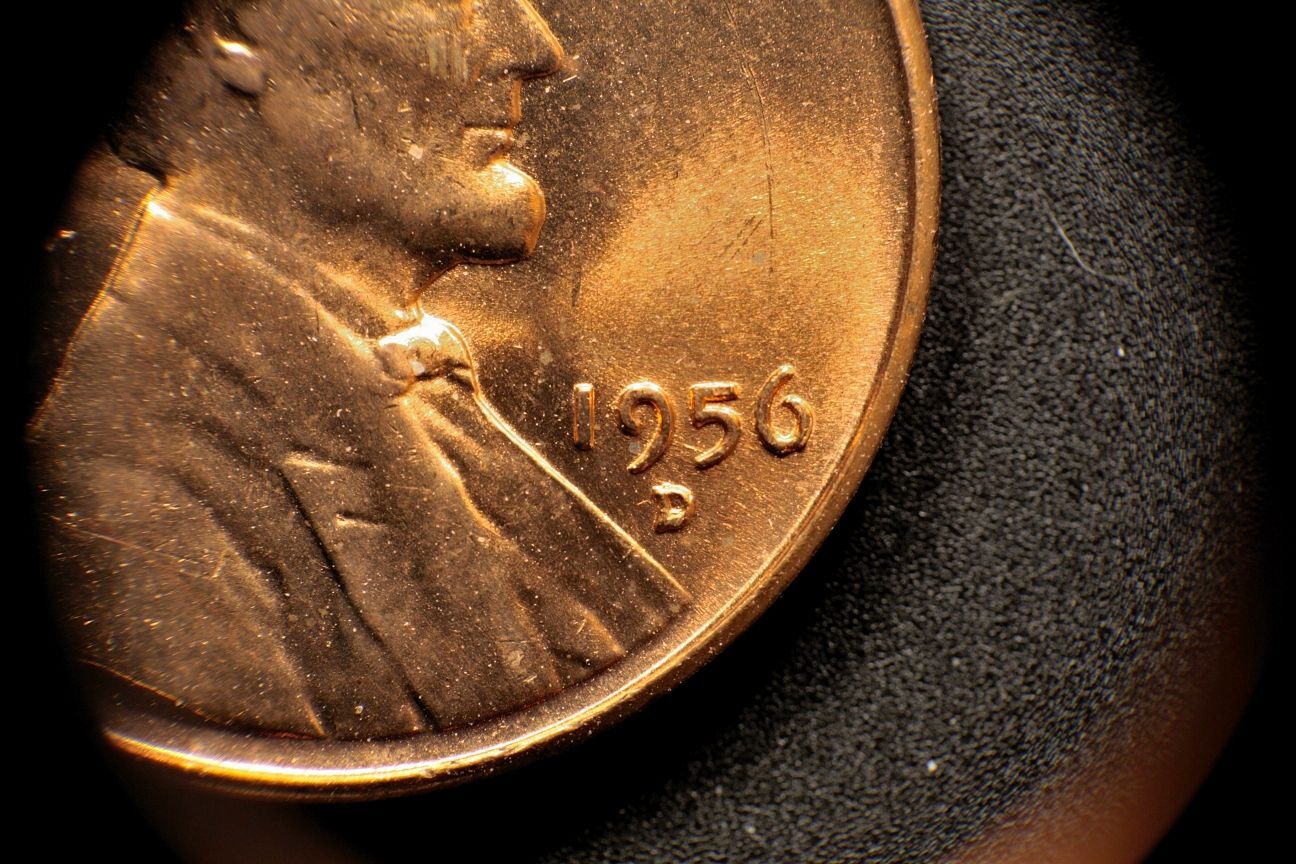
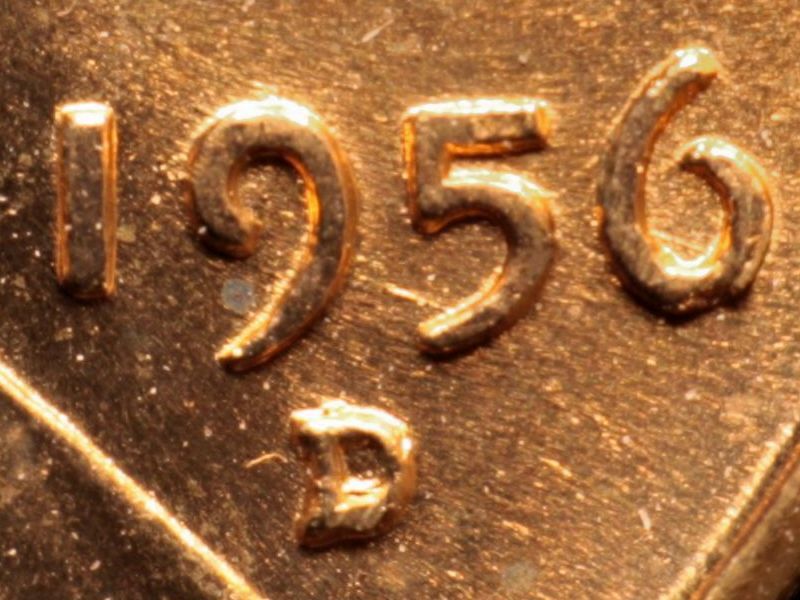
ZEISS 3/6/9X AT 3X
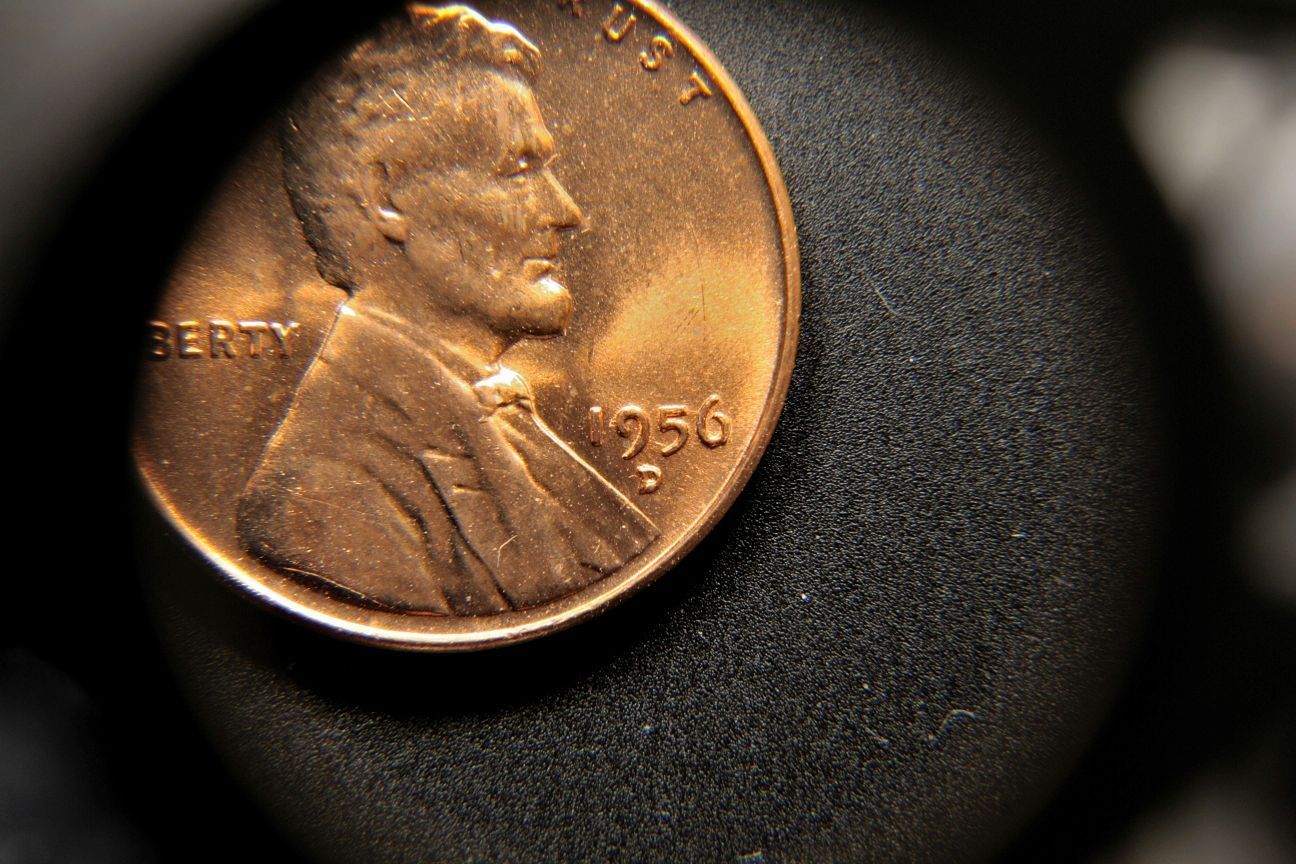
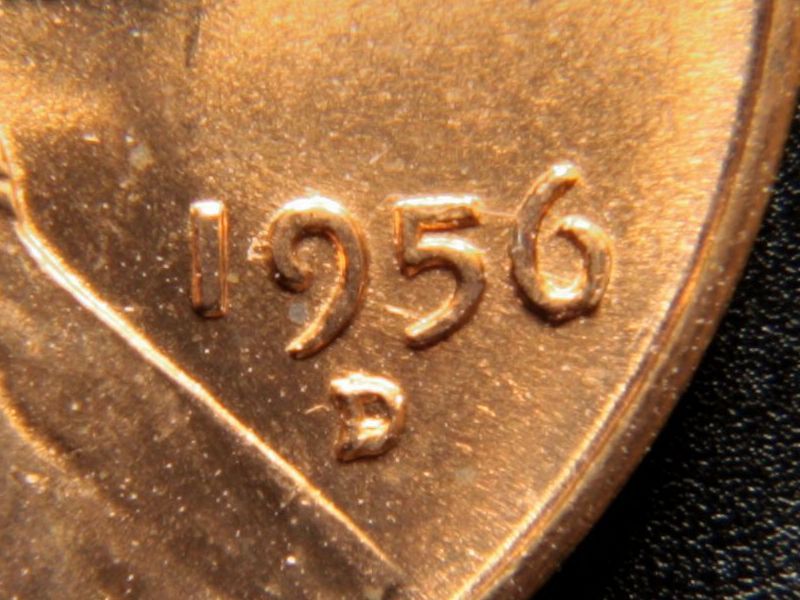
ZEISS 3/6/9X AT 6X
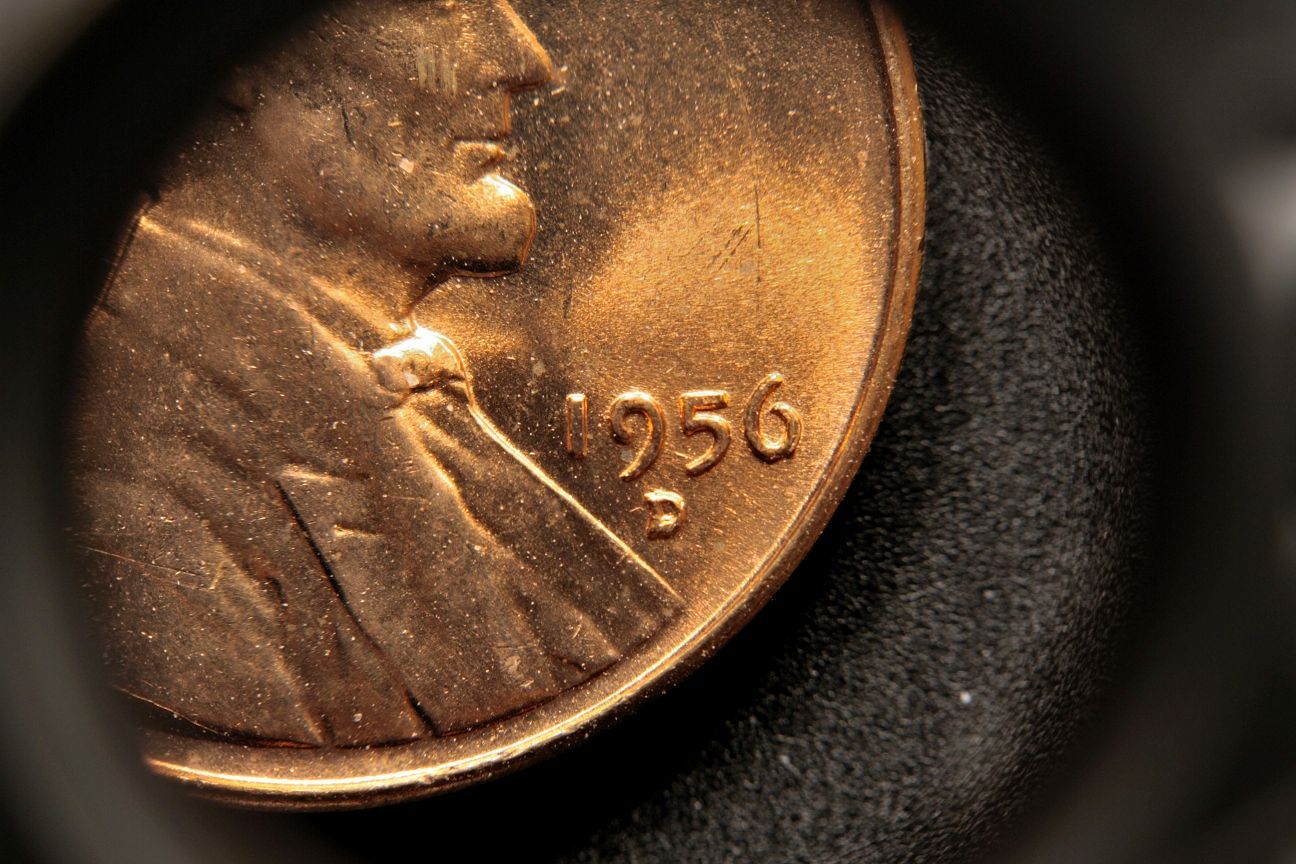

ZEISS 3/6/9X AT 9X
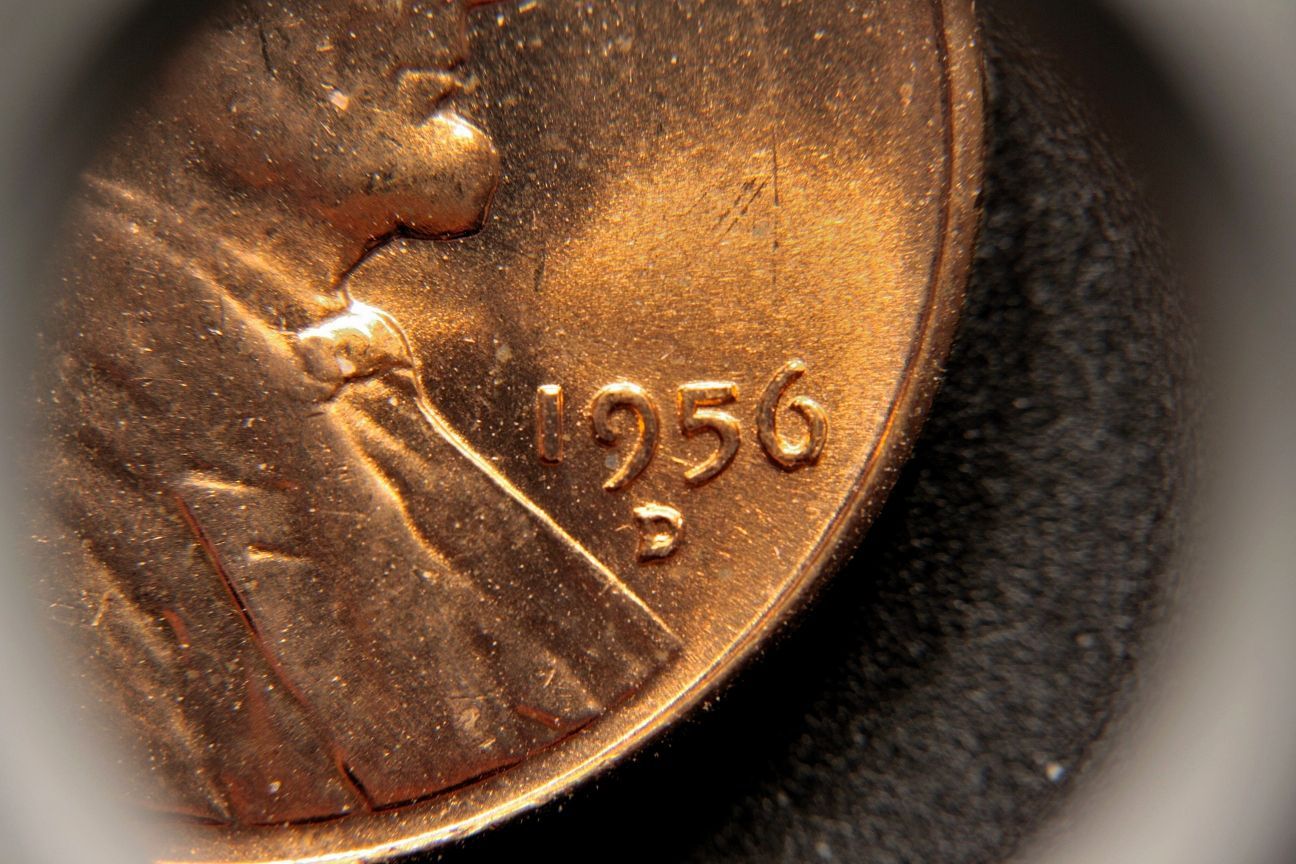

NIKON 75mm f/4 EL-Nikkor
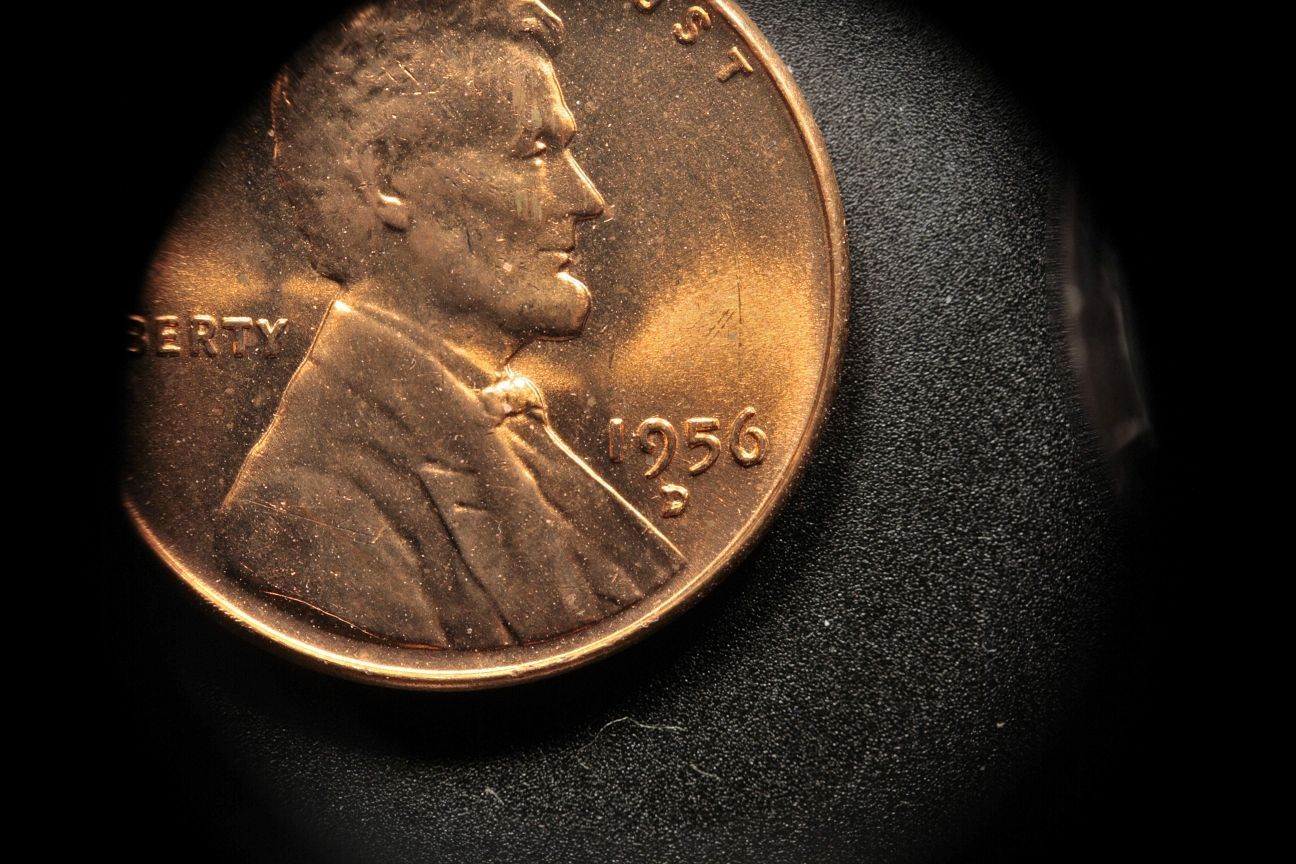
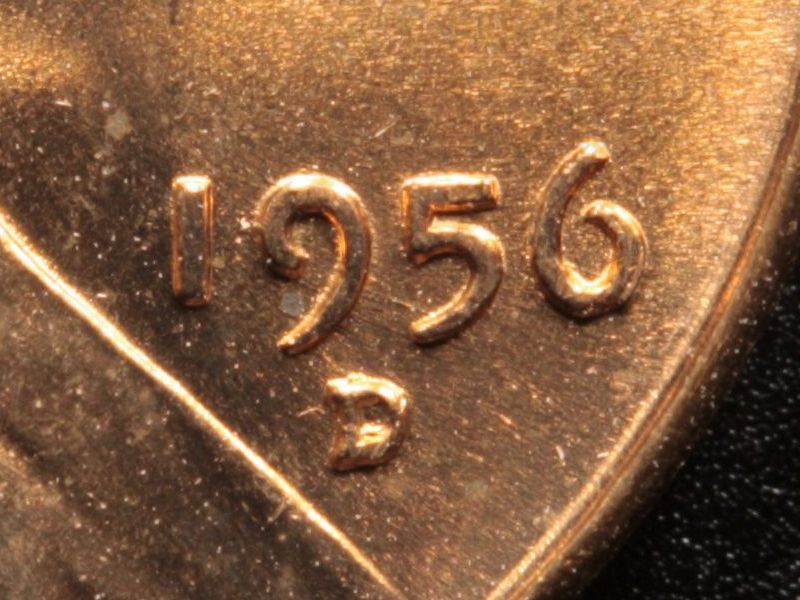
NIKON 50mm f/4 EL-Nikkor
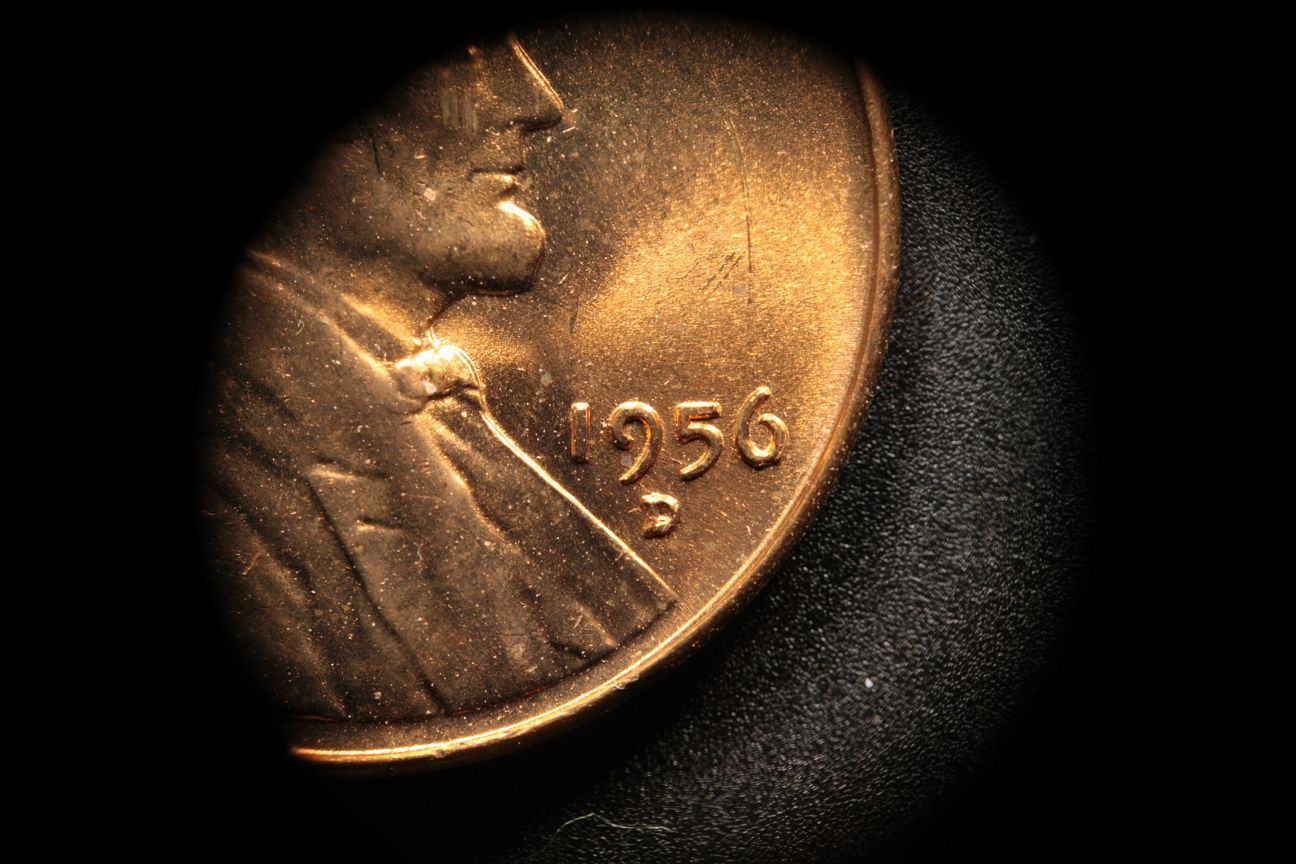
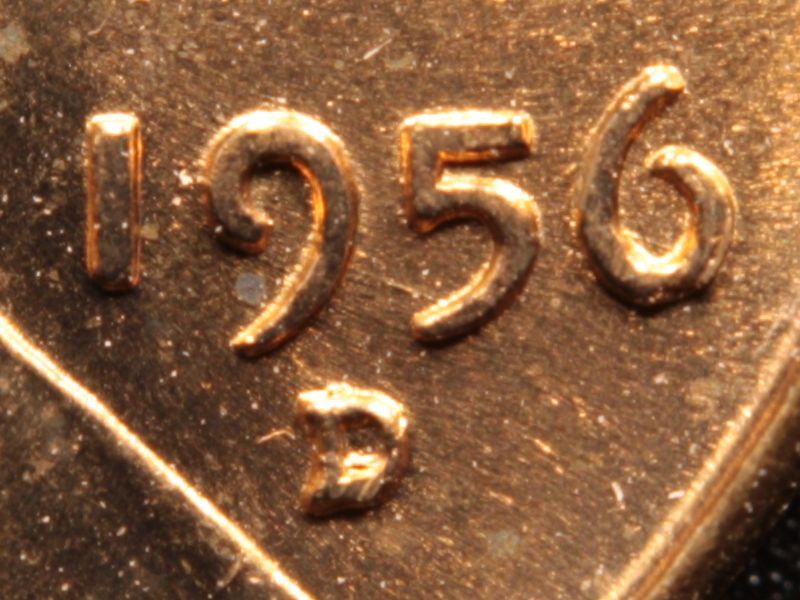
NIKON 50mmmm f/2.8 EL-Nikkor
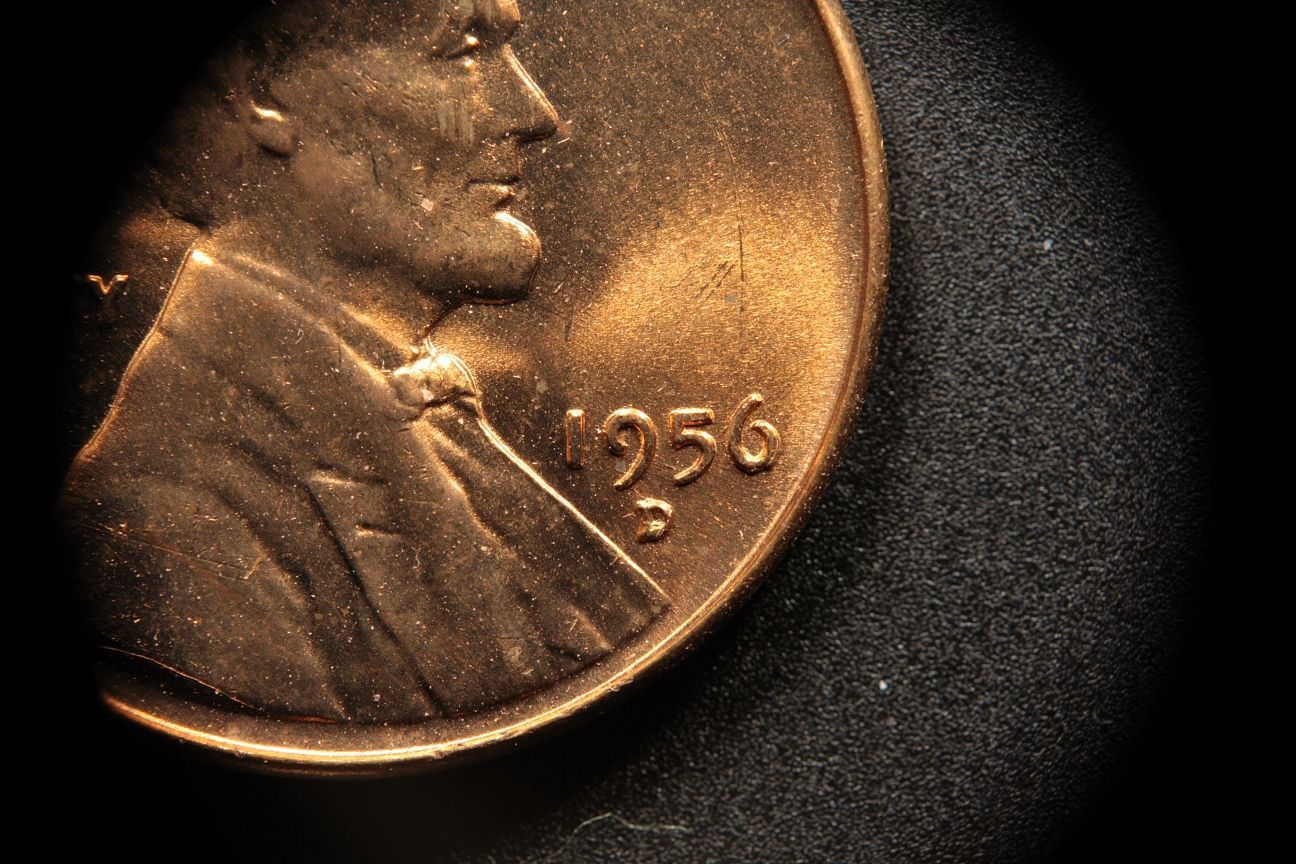
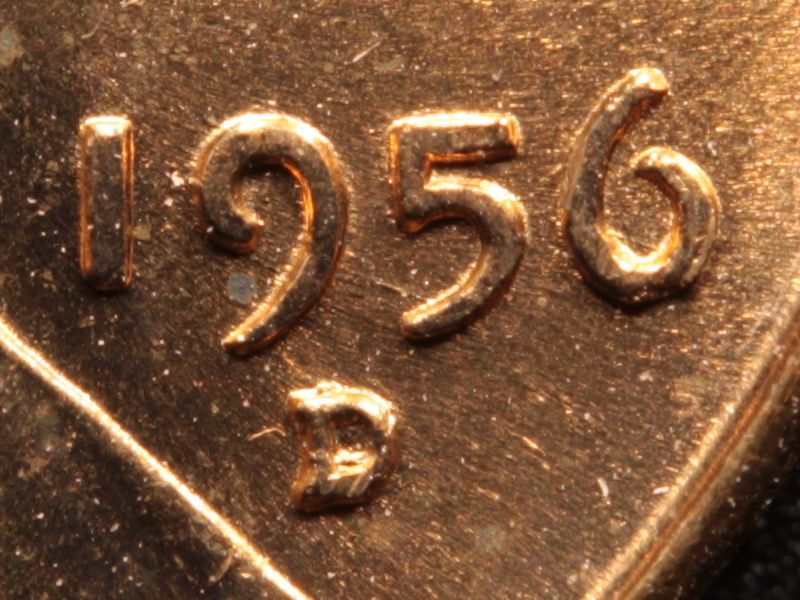
COMMENTARY
The images show that the simpler lenses are not as well-corrected as the more complex ones, with less sharp centers as well as less flatness across the field.
The Eschenbach 5X is a singlet lens, and it shows the weakest performance in this group.
The Lomo is a symmetrical doublet, with better correction and flatter performance to the edge.
The Zeiss is two singlets, though it is marketed as an achromat, so likely has more than one lens cemented together to form each singlet. It is a bit less sharp at the center than the Lomo, but is fairly flat to the edge. It is the best performer in the standard loupe category.
The Nikon 75mm f/4 is a 4-element Anastigmat/Anachromat, and is well-corrected for both color and field flatness. This shows up as both good sharpness in the center and edge.
The Nikon 50mm f/4 is another 4-element design, and is similar to the 75mm in sharpness. It has a smaller field of view but is still usable as a 6x loupe.
The Nikon 50mm f/2.8 is a 6-element, highly-corrected Anastigmat/Anachromat. It is the clear winner in this shootout for both center and edge sharpness.
While I did not attempt to photograph the effect of slightly tilting these lenses, you can probably imagine that if the edges of the field are starting to get blurry, any amount of tilt will result in more blurriness and distortion. This is the true test of field flatness and coverage. The enlarging lenses were designed for a wide field on both film and print planes, so can tolerate a lot of tilt before showing any unsharpness or distortion. None of the purpose-made loupes tested here can tolerate any tilt and must be held straight-on to the coin to achieve good sharpness.
There have been a number of discussions on this forum and others asking for recommendations on the best loupe to use for coins. Almost universally the Zeiss 3/6/9x and the Eschenbach 5x come up as most recommended. For the last couple years, I've been using enlarging lenses as loupes, so I usually chime in with the recommendation of a Nikon 50mm or 75mm, depending on the magnification needed. This recommendation usually falls on deaf ears, as most folks have no idea what to make of it. So, I decided to make a comparison among a few low to mid power (3-6x, with one 9x) loupes plus some enlarging lenses that can be used as loupes to show why I recommend them.
LIST OF THE CONTENDERS
Zeiss Aplanatic-Achromatic Doublet
This is an expensive (~$125) loupe that seems universally loved by those who own them
Lomo 6x Doublet
This is an inexpensive (I paid $10) loupe with decent performance
Eschenbach 5x Achromat
Another expensive (~$75) loupe with a strong following
Nikon 50mm f/4 EL-Nikkor
An inexpensive (~$25 used) enlarging lens. The aperture of f/4 gives a fairly narrow field of view when used as a loupe
Nikon 50mm f/2.8 EL-Nikkor
Another inexpensive (~$35 used) enlarging lens. The large f/2.8 aperture gives a wide field of view similar to the loupes in this shootout
Nikon 75mm f/4
A low-price (~$50 used) enlarging lens. The f/4 aperture gives a workable field of view due to the longer focal length
PHOTO OF THE CONTENDERS

SOME NOTES ON MAGNIFICATION
The shorter the focal length of a lens, the higher its ability to magnify an image but also the shorter its working distance. The Magnification Power of a lens of focal length FL is:
M = 250mm/FL +1
This formula assumes the lens is held close to the eye, which is pretty typical of how loupes are used to view coins.
So a 50mm enlarging lens, used as a loupe, has magnification of 250/50 + 1 = 6x. It will magnify like a 6x loupe. Similarly, a 75mm enlarging lens will magnify by 4.3x.
Some magnifiers are specified in Diopters rather than Focal Length or "Power". The Diopter rating of a lens is:
D = 1000mm/FL
So a 50mm enlarging lens is rated at 1000/50 = 20 Diopters. Given the Diopter rating, the Magnification is:
M = D/4 + 1
DETAILS OF THE SHOOTOUT
For the shootout, I used a 1956-D RPM#4 Cent as the test vehicle, centering the images around the Date and Mintmark area. The images were taken with a Canon XS camera using a Canon 18-55mm lens in manual mode. The test lenses were held at their normal working distance from the coin, and the camera height above the coin adjusted such that the view would be similar to what the eye would see in this configuration. Working Distances were:
Nikon 50mm f/4: 37mm
Nikon 50mm f/2.8: 30mm
Nikon 75mm f/4: 50mm
Zeiss 3/6/9x: 70/35/20mm
Eschenbach 5x: 45mm
Lomo 6x: 35mm
IMAGES TAKEN WITH THE LOUPES
Images are of the overall view seen by the lens, plus crops of the mintmark area.
ESCHENBACH 5X


LOMO 6X


ZEISS 3/6/9X AT 3X


ZEISS 3/6/9X AT 6X


ZEISS 3/6/9X AT 9X


NIKON 75mm f/4 EL-Nikkor


NIKON 50mm f/4 EL-Nikkor


NIKON 50mmmm f/2.8 EL-Nikkor


COMMENTARY
The images show that the simpler lenses are not as well-corrected as the more complex ones, with less sharp centers as well as less flatness across the field.
The Eschenbach 5X is a singlet lens, and it shows the weakest performance in this group.
The Lomo is a symmetrical doublet, with better correction and flatter performance to the edge.
The Zeiss is two singlets, though it is marketed as an achromat, so likely has more than one lens cemented together to form each singlet. It is a bit less sharp at the center than the Lomo, but is fairly flat to the edge. It is the best performer in the standard loupe category.
The Nikon 75mm f/4 is a 4-element Anastigmat/Anachromat, and is well-corrected for both color and field flatness. This shows up as both good sharpness in the center and edge.
The Nikon 50mm f/4 is another 4-element design, and is similar to the 75mm in sharpness. It has a smaller field of view but is still usable as a 6x loupe.
The Nikon 50mm f/2.8 is a 6-element, highly-corrected Anastigmat/Anachromat. It is the clear winner in this shootout for both center and edge sharpness.
While I did not attempt to photograph the effect of slightly tilting these lenses, you can probably imagine that if the edges of the field are starting to get blurry, any amount of tilt will result in more blurriness and distortion. This is the true test of field flatness and coverage. The enlarging lenses were designed for a wide field on both film and print planes, so can tolerate a lot of tilt before showing any unsharpness or distortion. None of the purpose-made loupes tested here can tolerate any tilt and must be held straight-on to the coin to achieve good sharpness.
0
Comments
bob
<< <i>Great post but I think if you pulled out a enlarging lens at a show to inspect coins you'd instantly get crowned King of the Nerds!
I've seen a fair number of folks using microscope oculars, in reverse. That's pretty nerdy too, but what's wrong with being nerdy? Are appearances more important than anything else?
http://macrocoins.com
<< <i>Great post but I think if you pulled out a enlarging lens at a show to inspect coins you'd instantly get crowned King of the Nerds!
I have had it happen before, the guy said it was a projector lens and worked great.
That is, an f/2 lens will have a wider field of view than an f/2.8 lens; and an f/2.8 will have a wider FOV than an f/4 (???)
<< <i>Great post but I think if you pulled out a enlarging lens at a show to inspect coins you'd instantly get crowned King of the Nerds!
AWESOME........ I'm not the biggest geek anymore.
Coin Club Benefit auctions ..... View the Lots
<< <i>Do I understand this: a lower f-stop number lens will give a wider field of view (for coin viewing purposes)??
That is, an f/2 lens will have a wider field of view than an f/2.8 lens; and an f/2.8 will have a wider FOV than an f/4 (???) >>
Yep, that is true. Think of f-number as a divisor that tells you the diameter of the lens optics. A 50mm f/4 has optics about 50/4=12.5mm diameter. A 50mm f/2 would then be about 25mm dia, so bigger field of view.
http://macrocoins.com
Coin Club Benefit auctions ..... View the Lots
I will stick with the Eschenbach 5X for grading purposes.
For higher magnification I use my Hastings Triplet 7X, 10X, 14X or 20 X.
I'm glad I bought all of these many years back when they weren't so expensive!
<< <i>
<< <i>Great post but I think if you pulled out a enlarging lens at a show to inspect coins you'd instantly get crowned King of the Nerds!
AWESOME........ I'm not the biggest geek anymore.
Not to worry CoinZip as you'll always remain a strong contender for the title!
<< <i>The small size and metal construction of the Eschenbach 5X makes it ideal for grading at shows. The 50mm Nikor lens (I also have an excellent 80mm Schneider) are great but are bulky and prone to damage if not equipped with lens caps. The lens caps for these lenses were never intended for heavy use and tend to fall off if carried around.
I will stick with the Eschenbach 5X for grading purposes.
For higher magnification I use my Hastings Triplet 7X, 10X, 14X or 20 X.
I'm glad I bought all of these many years back when they weren't so expensive! >>
They were just as expensive, and maybe more so, accounting for inflation.
I agree that carrying a large lens at a show isn't practical, but use at home/office/shop is no issue.
http://macrocoins.com
See http://www.doubledimes.com for a free online reference for US twenty-cent pieces
<< <i>I have gone through several types of magnifiers from cheap to unjustifiably expensive. I always came back to the B&L 7x triplet. It just seems to work best for me. >>
I intend to test a few of the medium power loupes in another shootout. I tested the Zeiss at 9x since it had that option. The medium power loupes include the 7x Triplet. It is a good loupe. One thing that is the same for most all of the "simple" loupe designs (less than 4 elements) is that you have to hold it very square versus the coin or it distorts heavily. Otherwise, it has a wide field (19mm) with decent distortion and field flatness.
http://macrocoins.com
But the Nikkor lens is an EL enlarging lens. Do you think that SLR camera lens (AF-S) might work as well? I don't have a 35 or 50 mm fixed focal length lens, but a 28 or 35 mm wide angle lens would be able to do double duty(?)
I have strange antique brass loupe which I use mostly. Also have some of those cheap chrome/glass 10x units that are soldby many dealers.
Not sure who makes them.
Your thread prompted me to pull out both my Nikor 50 and 75mm enlarging lenses though! Took a look at some coins and they are indeed sweet!
Thanks for sharing the knowledge and results of your study. I doubt I'll be taking my lenses to shows however, more so because I care for them too much, and less that I would appear nerdy...
I lost my very favorite loupe at a show some years ago and haven't gotten over that yet!
Happy, humble, honored and proud recipient of the “You Suck” award 10/22/2014
<< <i>I just use - and prefer - my Zeiss 3x6x9....no studies, it is just a great loupe. Cheers, RickO >>
+1...What he said.
Joseph J. Singleton - First Superintendent of the U.S. Branch Mint in Dahlonega Georgia
Findley Ridge Collection
About Findley Ridge
Keeper of the VAM Catalog • Professional Coin Imaging • Prime Number Set • World Coins in Early America • British Trade Dollars • Variety Attribution
<< <i>I didn't notice it mentioned in the post: Are the enlarging lenses used wide open for viewing as a loupe? >>
Yes they were...good point that should have been mentioned.
http://macrocoins.com